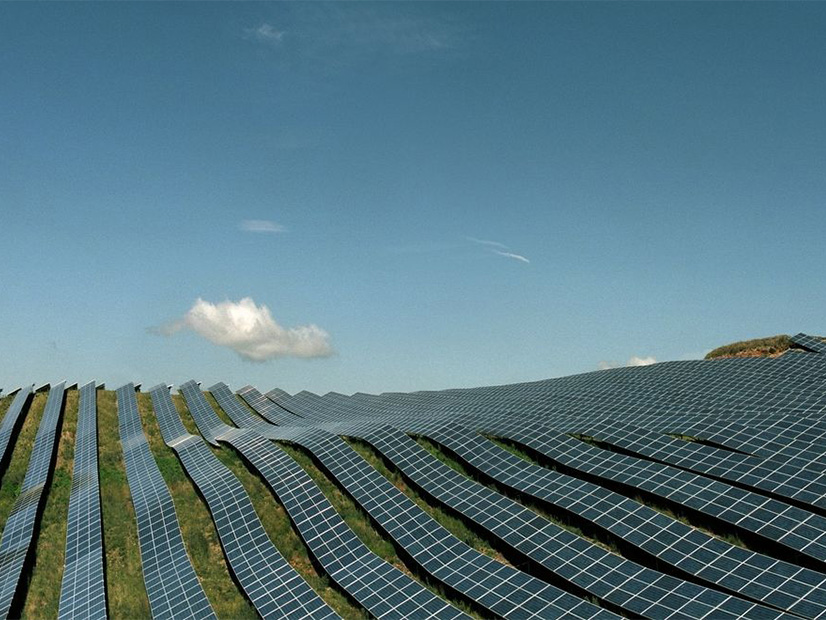The Organization of MISO States is preparing a letter to MISO leadership to stress resource adequacy work following the Midwestern capacity shortage revealed in last month’s capacity auction.
State regulators discussed the draft letter — not yet public — at an OMS Board of Directors meeting Thursday.
As described by OMS leadership, the letter will emphasize an urgency for continued work and collaboration on resource adequacy within in the footprint, the role MISO plays ahead of its capacity auctions and the need to work together. It will also express concerns with the “surprising nature of the auction results,” according to OMS Executive Director Marcus Hawkins.
MISO’s 2022/23 Planning Resource Auction (PRA) failed to secure enough capacity in its Midwestern zones, which cleared at the cost of entry for new generation. Now, MISO Midwest faces the possibility of rolling outages in the 2022/23 planning year, which begins June 1. (See MISO’s 2022/23 Capacity Auction Lays Bare Shortfalls in Midwest.) Though members approached the auction with more capacity year-over-year, MISO said the resource additions were mostly intermittent and generally less available than retiring thermal generators.
OMS President and Indiana Utility Regulatory Commissioner Sarah Freeman said the organization has notified MISO CEO John Bear that it is composing the letter. It’s not clear if the letter will contain any specific requests to the RTO.
“The PRA honestly showed us a lot of things,” Freeman said.
North Dakota Public Service Commissioner Julie Fedorchak said OMS must approach any recommendations following the capacity deficit “delicately” because resource planning is the states’ arena. But she said she worries at times that states are too protective of that arena.
“We can’t protect our customers from being curtailed when we’re part of a regional grid. … The reality is we’re beholden to everyone else,” Fedorchak told her fellow regulators. She said MISO should ensure its price signals are efficient, its supply data are correct and that it manages “markets that effectively reward resources when they’re there when we need them.”
“We are very concerned. How do we protect our customers in Iowa? Iowa is a net exporter of power, but that doesn’t protect us,” Iowa Utilities Board Commissioner Richard Lozier agreed.
OMS plans to refine wording of the letter in upcoming nonpublic spring meetings. Later this month, OMS will release its annual resource adequacy survey results in conjunction with MISO.
Summer Concern, Winterization Talk
In spite of looming summer concerns, OMS members also heard an update on MISO’s preparations for new NERC winterization standards at the meeting.
Bobbi Welch, MISO principal adviser of standards and assurance, said the first round of standards set to go into effect April 2023 involve preparedness, operations training and better communications coordination. (See FERC Approves Cold Weather Standards.)
A second round of standards in response to the February 2021 winter storm will likely involve asset investments, including insulation and heaters, Welch said. (See FERC, NERC Release Final Texas Storm Report.)
Of the 28 recommendations FERC and NERC most recently proposed — 37, counting the multipart recommendations — MISO has found 13 that directly apply to its operations. A few of these are being addressed as part of NERC’s development of more standards.
MISO has also already addressed a few of the recommendations, including improving near-term load forecasting, incorporating intermittent resource output in load forecasting and more quickly reporting generation and transmission derates and outages during emergencies. These were in response to the January 2018 Southern cold snap, which prompted the new standards.
Welch said MISO now has two meteorologists on staff to better forecast weather conditions.
On some fronts, there’s more work to do, including more accurately predicting reserve margins, performing bi-directional seasonal transfer studies and determining how generators should be compensated for winterization investments, among other items.
MISO must also work on guidelines for critical natural gas facility loads in the footprint. Welch pointed out that the footprint contains 36 pipelines and several different state jurisdictions, making standardized pipeline notifications and a prioritized method of gas circuit shutdowns more of a challenge than in single-state ISOs.
Welch said that in some instances, grid operators rationing electricity supply in cold-weather events have inadvertently cut off electricity to circuits fueling critical natural gas facility loads including power plants, thus worsening blackouts. She said industry efforts are underway to identify the locations of critical natural gas infrastructure facilities so that these circuits remain energized when there is a need to shed load.
She also said MISO has recently begun studying its emerging and atypical east-to-west flow patterns, as well as its neighbors’ flow patterns, during recent cold-weather events.
MISO will give progress reports on its road to compliance with the cold-weather standards at upcoming Reliability Subcommittee meetings, Welch said.
“It’s a very tight development timeline,” she told state regulators.


